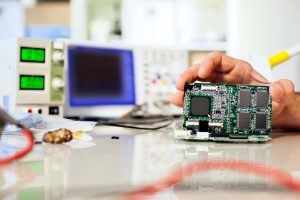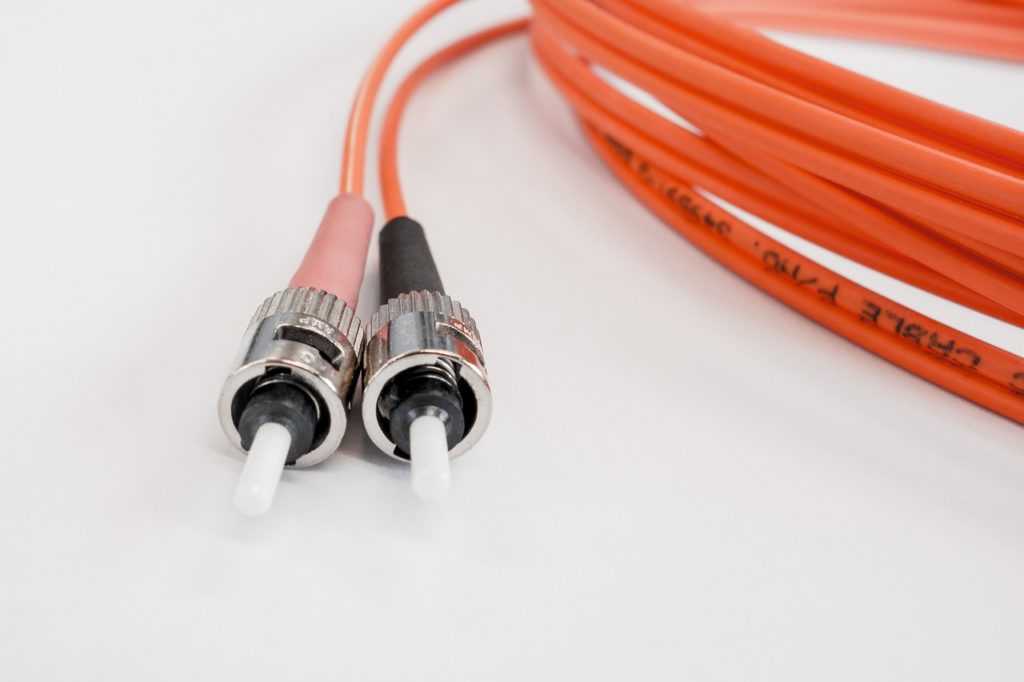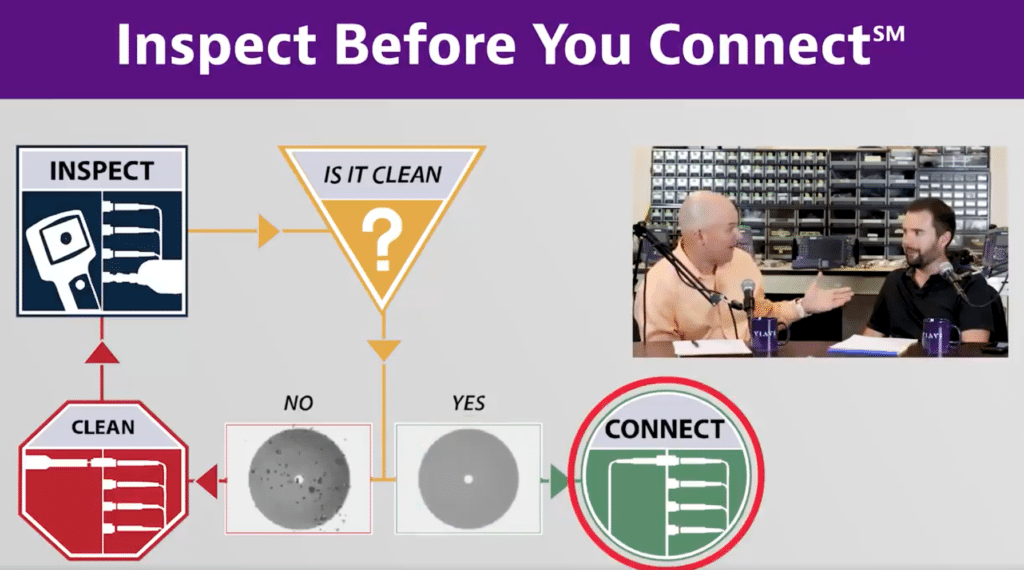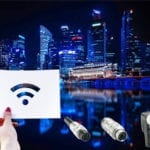Contaminated Connectors Compromise Fiber Optic Networks
A speck of dust can spell disaster for a fiber network. The correct cleaning methods make all the difference in protecting the optical signal.
By Mike Jones, Vice-President, MicroCare Corp.
When optical networks are exposed to even miniscule amounts of contamination, performance can suffer. In typical operating conditions, dust and debris can accumulate on the fiber optic connector end-faces, also called optical interconnects, contaminating the contact zone of a mated connector pair. Although they are minute, when dust particles come between mated connectors, they can cause scratches and pits to both end faces, resulting in an increase in insertion loss that will interrupt or compromise the integrity of the optical signal.

Sources of Contamination
The standard for inspection and cleaning fiber optic connectors is IEC 61300-3-35. It defines contamination as a removable defect that negatively impacts the performance of mated connector pairs. Most dust particles are several microns in size and visible only with a microscope, yet they can introduce serious problems.
Dust-based contamination originates from many sources. Airborne dust can come from dead skin, plant pollen, vehicle emissions, cardboard boxes, and clothing lint. Ironically, dust particles can also come from the foam swabs, wipes, and cross-contaminated cleaning fluids some installers use to clean their optical connectors, and connector wear debris caused by the contact friction when connectors are mated is the primary cause of dust-based contamination.
Unfortunately, it is incorrect to assume that a new cable assembly will have a pristine connector end face. Many plastic end caps include chemicals called plasticizers to improve the durability of the end cap. However, many plasticizers outgas, leaving a film of small oil droplets on the end face. Many manufacturers also use mold release agents to speed the manufacturing process of the end caps. These end caps may retain some of the mold release agent on the inner surface, which can land onto the connector end face. End caps are never cleaned and frequently have small amounts of dust inside the sleeve, which can migrate onto the end face. Plus, putting the end cap on at the factory and removing it by the network installer causes wear debris. The best practice to ensure that optical connectors are delivering designed performance is to inspect and clean both ends of the connector pair before they are mated.
Don’t Let Static Be in Charge
Electrostatic charge is a major factor for attracting dust in fiber optic networks. When two different materials are rubbed together, such as a dry paper wipe on a ceramic end face, the friction causes an electrostatic charge to develop on the connector. The charged end face will continually attract dust particles, just as a magnet attracts iron. Since fiber connectors are made with dielectric materials, causing them to act as an electrical insulator, the static charge has no place to go and can persist indefinitely on the end face.
The easiest way to eliminate the contamination caused by electrostatic charge is the wet-dry cleaning process with an appropriate, optical-grade cleaning fluid. The cleaning fluid becomes the conductive medium and dissipates the electrostatic charge. To achieve the best results, select an optical-grade cleaning fluid that will not leave any residue. Cleaning fluids that come in hermetically sealed containers are optimal because they prevent cross-contamination and spills.
The wiping of the fiber connector end face is normally accomplished using a wipe for an unmated connector or a stick cleaner for bulkhead connectors. Technicians will want to select an optical-grade wipe or stick engineered for cleaning fiber, since these products will be soft enough not to scratch the ceramic or composite ferrule end face. They will also be highly absorbent for wicking contamination away from the surface of the end face while not generating lint.

Fiber optic ferrules are extremely sensitive to contamination. Proper cleaning procedures ensure peak performance.
Isopropyl alcohol (IPA) is no longer a good choice for cleaning modern fiber end faces. It is highly flammable and has a slower evaporation rate than modern chemistries, which have been engineered specifically for cleaning fiber optic connectors. IPA also is hygroscopic and will attract water molecules from the air, contaminating the IPA and degrading its ability to clean. As the IPA absorbs the water molecules in the local humidity, it will also pick up microscopic dust particles, such as exhaust particles from traffic and pollen from plants, as well as all the absorbed minerals and salts. All of these contaminates will degrade the cleaning process.
Another option some suppliers are promoting is water-based fiber cleaning fluids. These also are sub-optimal because they dry extremely slowly. The high percentage of water can also cause these cleaning fluids to freeze if left in an installer’s truck overnight or an unheated storage area.
Final Thoughts
Keeping fiber clean and contaminant-free is essential. Without proven, reliable cleaning methods, network technicians will face escalating challenges as they try to keep systems running efficiently. It is important to find a fiber cleaning method that is affordable, easy to use, consistent, and effective. Modern cleaning procedures will save time and money and make a network substantially more reliable.
Installers should use a fast-drying, non-flammable cleaning fluid that dissipates static and is hermetically sealed to prevent contamination. A fast-drying fluid is an especially desirable characteristic, as this keeps moisture from being attracted to the end face and therefore minimizes contamination. A good fiber cleaning fluid used with a proper lint-free wipe will achieve optimum results at the lowest cost.
Sticklers Fiber Optic Cleaners are manufactured by MicroCare™. Learn more about MicroCare’s cleaning products for fiber optic systems, PCBs, medical devices, and other electronics assemblies.






